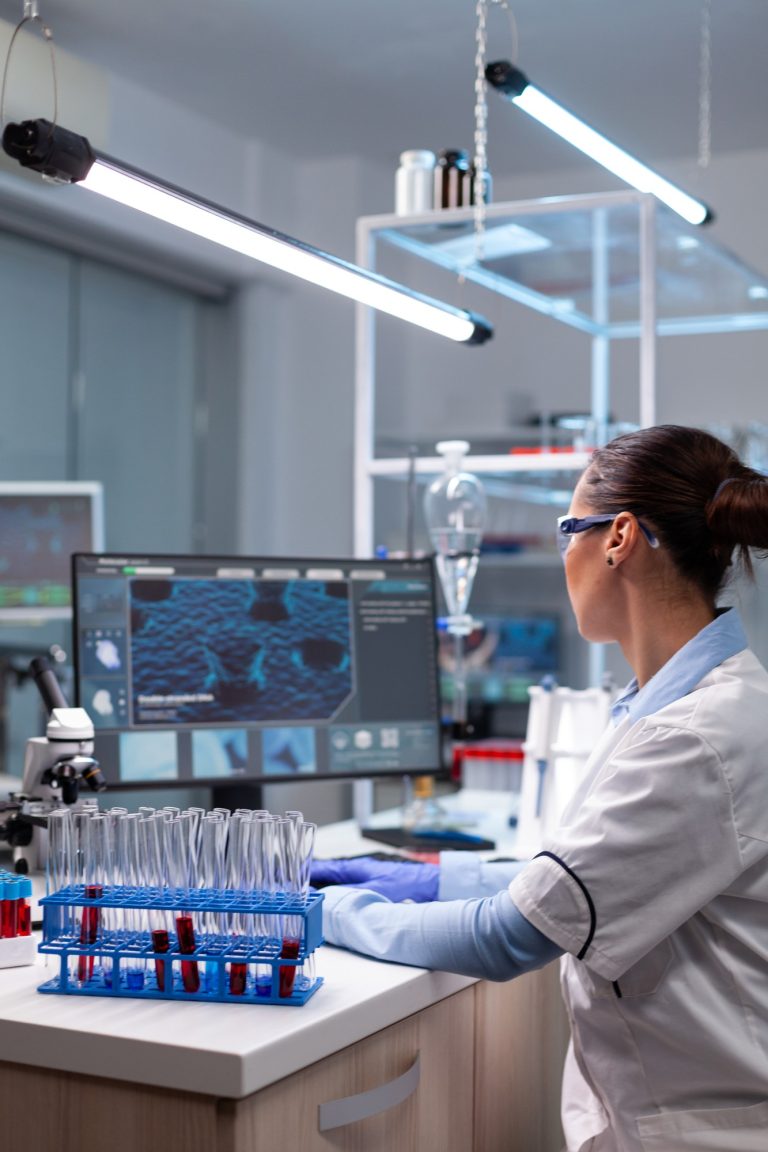in-lab sleep studies
A brief overview on what to expect during an in-lab sleep study.

Polysomnogram (a.k.a. in-lab sleep study)
Overview
Polysomnography, known as a sleep study, is a test used to diagnose sleep disorders. Polysomnography records your brain waves, the oxygen level in your blood, and your heart rate and breathing during sleep. It also measures eye and leg movements.
A sleep study may be done at a sleep disorders unit within a hospital or at a sleep center. The test is usually performed at night. But it may be done during the day for shift workers who usually sleep in the daytime.
In addition to diagnosis, a sleep study might help determine a treatment plan if you’ve been diagnosed with a sleep disorder. It also might be used to adjust your treatment.
Why it’s done
Polysomnography monitors your sleep stages and cycles. It can identify if or when your sleep patterns are disrupted and why.
The typical process of falling asleep begins with a sleep stage called non-rapid eye movement (NREM) sleep. During this stage, brain waves slow down. This is recorded during a sleep study with a test called an electroencephalogram (EEG).
After an hour or two of NREM sleep, brain activity picks up again. This sleep stage is called rapid eye movement (REM) sleep. Your eyes quickly move back and forth during REM sleep. Most dreaming occurs during this stage of sleep.
You typically go through multiple sleep cycles a night. You cycle between NREM and REM sleep in about 90 minutes. But sleep disorders can interfere with this sleep process.
Your health care provider may recommend a sleep study if it’s suspected that you have:
- Sleep apnea or another sleep-related breathing disorder. In this condition, breathing stops and starts repeatedly during sleep.
- Periodic limb movement disorder. People with this sleep disorder flex and extend their legs while sleeping. This condition is sometimes linked to restless legs syndrome. Restless legs syndrome causes an uncontrollable urge to move the legs while you’re awake, usually in the evenings or at bedtime.
- Narcolepsy. People with narcolepsy experience overwhelming daytime drowsiness. They can fall asleep suddenly.
- REM sleep behavior disorder. This sleep disorder involves acting out dreams during sleep.
- Unusual behaviors during sleep. This includes walking, moving around or rhythmic movements during sleep.
- Unexplained long-lasting insomnia. People with insomnia have trouble falling asleep or staying asleep.
Risks
Polysomnography is a noninvasive, painless test. The most common side effect is skin irritation. This can be caused by the adhesive used to attach the test sensors to your skin.
How you prepare
Don’t consume drinks or food containing alcohol or caffeine during the afternoon and evening before a sleep study. Alcohol and caffeine can change your sleep patterns. They may make symptoms of some sleep disorders worse. Also don’t nap in the afternoon before a sleep study.
You may be asked to bathe or shower before your sleep study. But don’t put on lotions, gels, colognes or makeup before the test. They can interfere with the test’s sensors, called electrodes.
What you can expect
During polysomnography
If you’re having a sleep study in a sleep center, you’ll arrive in the evening and stay overnight. You can bring items you use for your bedtime routine. You also can sleep in your own nightclothes.
At Alaska Sleep Clinic, the room where polysomnography is done is similar to a hotel room. It’s dark and quiet during the test. You won’t share the room with anyone else.
The sleeping area will typically have a low-light video camera. This allows the polysomnography technologists to see what’s happening in the room when the lights are out. It also has an audio system. This allows them to talk to you and hear you from their monitoring area outside the room.
After you get ready for bed, one of the technologists will place the sensors. They’re applied to your scalp, temples, chest and legs using a mild adhesive such as glue or tape. The sensors are connected by wires to a computer. The wires are long enough to let you move around in bed. A small clip also is placed on your finger or ear. This monitors the level of oxygen in your blood.
While you sleep, a technologist monitors your:
- Brain waves.
- Eye movements.
- Heart rate.
- Breathing pattern.
- Blood oxygen level.
- Body position.
- Chest and abdominal movement.
- Limb movement.
- Snoring and other noises.
The technologists monitor you during the night. If you need help, you can talk to them through the monitoring equipment. They can come into the room to free up the wires if you need to get up.
During the study, the technologist may have you try a positive airway pressure (PAP) machine for sleep apnea. This is a device that consists of a tight-sealing nosepiece or face mask through which a gentle stream of air is delivered to help you breathe.
Continuous positive airway pressure (CPAP) is one type of PAP machine. CPAP devices deliver a constant stream of air that keeps the airway passages open while you sleep.
For some people, bilevel positive airway pressure (BPAP) machines may be a more comfortable choice. These devices deliver more pressure while you’re breathing in, and lower pressure when you exhale.
Although you probably won’t fall asleep as easily or sleep as well at the sleep center as you do at home, this usually doesn’t affect the test results. A full night’s sleep isn’t required to obtain accurate polysomnography results.
After polysomnography
After polysomnography, the sensors are removed and you may leave the sleep center. You can return to your usual activities after polysomnography.
Results
The measurements recorded during a sleep study provide a great deal of information about your sleep patterns. For example:
- Brain waves and eye movements during sleep can help your healthcare team assess your sleep stages. This helps identify disruptions in the stages. These disruptions may occur due to sleep disorders such as narcolepsy or REM sleep behavior disorder.
- Heart and breathing rate changes and changes in blood oxygen that aren’t typical during sleep may suggest sleep apnea.
- Using PAP or oxygen can indicate which device settings work best for you. This helps if your healthcare provider would like to prescribe the device for home use.
- Frequent leg movements that disrupt your sleep may indicate periodic limb movement disorder.
- Unusual movements or behaviors during sleep may be signs of REM sleep behavior disorder or another sleep disorder.
The information gathered during a sleep study is scored first by a polysomnography technologist. The technologist uses the data to chart your sleep stages and cycles. Then the information is provided to your board-certified sleep medicine physician for interpretation.
At a follow-up appointment, your provider reviews the results with you. Based on the data gathered, your healthcare provider will discuss any treatment or further evaluation that you may need.
During the study, large amounts of data are collected about your sleep. This high volume of information must be analyzed and interpreted. The final report is sent to your referring physician. The diagnosis will include the type, severity, and character of your disorder.
For more in-depth information on sleep studies check out these articles:







